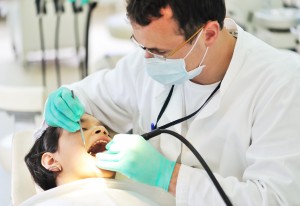 What is fluoridation for children?
What is fluoridation for children?
It consists of applying a layer of fluoride gel on your child’s teeth for about a minute. To this plastic moulds (or buckets) that are impregnated with the gel and placed on the teeth are used. This is a very simple procedure that does not cause any pain or discomfort.
Why fluoridation is recommended in children?
Because topical application of fluoride at high concentrations strengthens the tooth enamel of children and makes them more resistant to decay and demineralization. According to the specialists fluoridation reduces up to 50% the risk of caries.
Fluoridation serves as a supplement to fluoride found in water, foods, mouthwashes, toothpastes, lozenges, gels, dietary supplements, etc..
Preventive properties of fluorine are:
- Encourage the re mineralization of enamel resulting in a more durable surface.
- Inhibit demineralization when the acids produced in the mouth penetrate the nail.
- Inhibit bacterial activity and reduce the growth of plaque.
General Guidelines:
- The child should not be less than 6 years to avoid the risk of dental fluorosis
- Before fluoridation is very important that the teeth are very clean and free of plaque for the gel to fully adhere to the entire surface of the tooth.
- At the end of treatment, the child will not eat any food for half an hour and rinse.
Risks and contraindications
Excessive exposure to high concentrations of fluoride (especially in children 1 to 4 years) may cause dental fluorosis. It manifests with small white spots on the enamel in less serious or brown spots that occupy much of the tooth surface in the most severe cases.
Therefore, the professional must review the child’s mouth and make a small questionnaire dental hygiene habits before treatment.